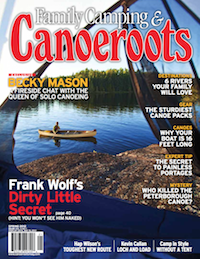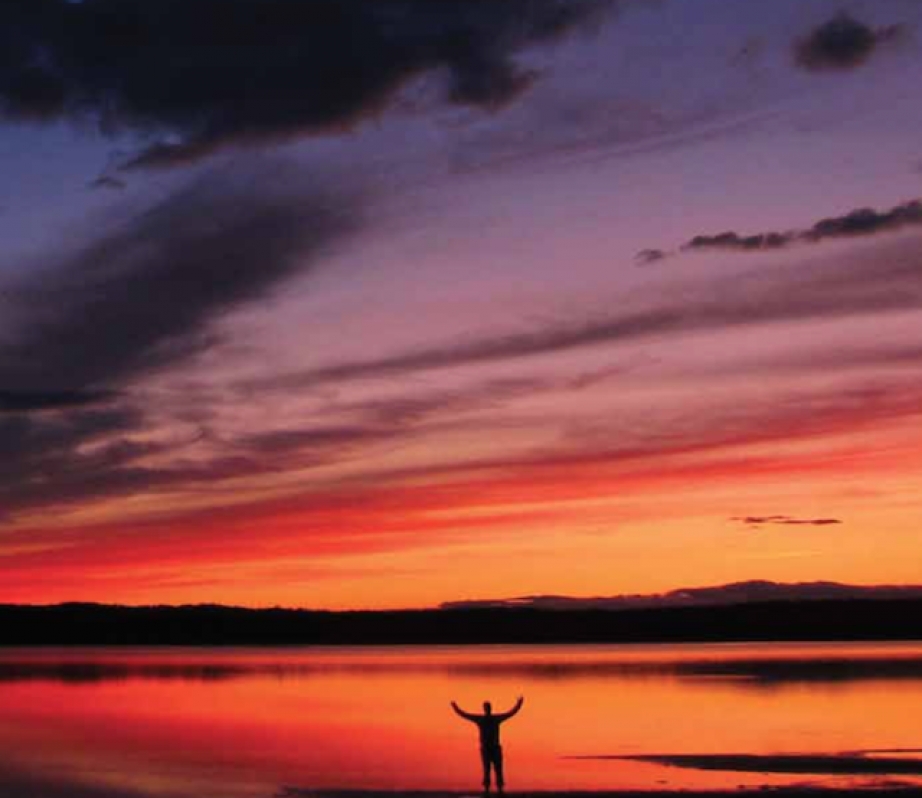Wading through my gear stash last spring, my eyes eventually settled on the protective case that contains my video camera.
As an outdoor filmmaker, I feel a certain obligation to bring the camera along on any extended trip and attempt to craft a work of engaging cinema. Creating art from the wilderness experience is a Canadian tradition made internationally famous by emissaries like Emily Carr and Bill Mason. Inspired by these icons, I’ve done my small part through the medium of film by sharing stories set within the context of remote self-propelled expeditions.
More often than not, I travel by canoe. This summer, the plan was for my friend Todd McGowan and I to paddle through the deepest heart of Ontario’s Boreal forest via an 1,120-kilometer route that would span the length of Wabakimi Provincial Park and then continue north, eventually ending at the mouth of the Winisk River on Hudson Bay. But this trip would have one important difference: for only the second year in about a decade, I said no to filming.
Once committed to making a film, any situation on trip that is hard, beautiful, interesting or relevant demands that I pull out the camera and start recording—an all-encompassing task that inevitably changes the personal experience within the journey. After making back-to-back documentaries, it was time to let my artistic outlet lie fallow and rejuvenate. This summer the canoe trip itself—not the filming of it—would be front and center.
If art is the expression of individual freedom, emotion and creativity, says Frank Wolf, then the canoe trip must be its highest form
I grovel up a side gully to reach the top. Peering over the edge, the looming gap between my precarious perch and the distant water takes my breath away. I inhale, step into space and let out a hoot before exploding into the liquid below. Under the surface, I look up through rising bubbles at the cliff as it bends like a Dali painting in the expanding ripples.
Experiences like this accumulate like dirt and calluses over the course of a canoe trip, eroding the thin veneer of a modern, vicarious iPhone life to reveal a basic, animal core that exists in each of us. They are moments of pure freedom.
Painters are naturally drawn to certain processes and mediums—some choose oil, some acrylic, others go for watercolor. The key for the artist is to find something that feels right, the method and result that satisfies the creative self.
Similarly, individual canoe trippers approach the wilderness journey in their own unique ways. Some like to paddle to an island and chill out for a week. Others linger in camp, put in a few hours on the water and then linger in camp again. The beauty of canoe tripping is that it reflects the style of the individual and no matter how you go about it, the rewards are rich.
If a film or painting is considered to be art then canoe tripping is, in every sense, art.
Typical days on this journey have been 10 hours long with perhaps a half-hour break for lunch. We average almost 47 kilometers daily for the 24-day trip, including upstream, downstream, portages and dragging. I only sleep five hours a night because I’m so energized by every paddle stroke and aspect of this fresh environment that I want to jam as much action as possible into each moment.
Todd is setting up camp when I double-back along a rough 1,100-meter portage on the Witchwood River. I hop fallen logs and zigzag through the forest as fast as I possibly can. It’s a game to test my speed and agility and see how quickly I can retrieve the last pack. Turning a corner, a knobby spruce branch wedges perfectly between my front and back leg, catapulting me headfirst into the moss. I curse the branch and look down to see a long, deep laceration on the calf of my left leg and an ugly gouge on the shin of my right. Blood pours instantly from both wounds.
I get up and continue to run, first at a hobble and then at a steady, rhythmic clip. My clenched teeth relax into a smile and everything clarifies. Blood, moss, spruce and movement in the heart of the Little North. Life is simple and I am extremely happy.
I’ve been affected by a strain of madness perhaps, but on reflection it makes perfect sense. People are hardwired for this—to physically struggle and push our bodies in nature for extended periods of time. Our ancestors ran down prey and traveled under their own power for most of the million years or so of human existence. If time is a gauge, we are only a blip apart from that way of life—a blip filled with La-Z-Boy chairs and cheesecake, but a blip nonetheless. Much like the artist whose need to create is passed to them from the DNA of prehistoric cave painters, our genetics retain that need to move. Canoe tripping is a portal that allows us to tap into this tribal call.
Todd and I are in the Cree village of Peawanuck waiting for our plane to come and return us to urbana. In the meantime we’re hanging out at the house of the local Northern store manager, who generously offered us accommodation. I’m in the dining room hunched over a detailed map of Ontario, tracing a line over the blue veins and blotches of our completed route. I step back and admire the curves of the fresh line with a visual record of every campsite, lake and river etched in my mind.
I love making films about canoe journeys, but I realize now that making a film is simply adding another artistic layer to a thing that is itself utterly original and creative. Like an artist who is compelled to produce a painting on a blank canvas, the canoe tripper is compelled to step into a blank landscape, emerging at the end with the ultimate experience of a vision realized. If a film or painting is considered to be art then canoe tripping is, in every sense, art.

This article first appeared in the Spring 2012 issue of Canoeroots Magazine.




